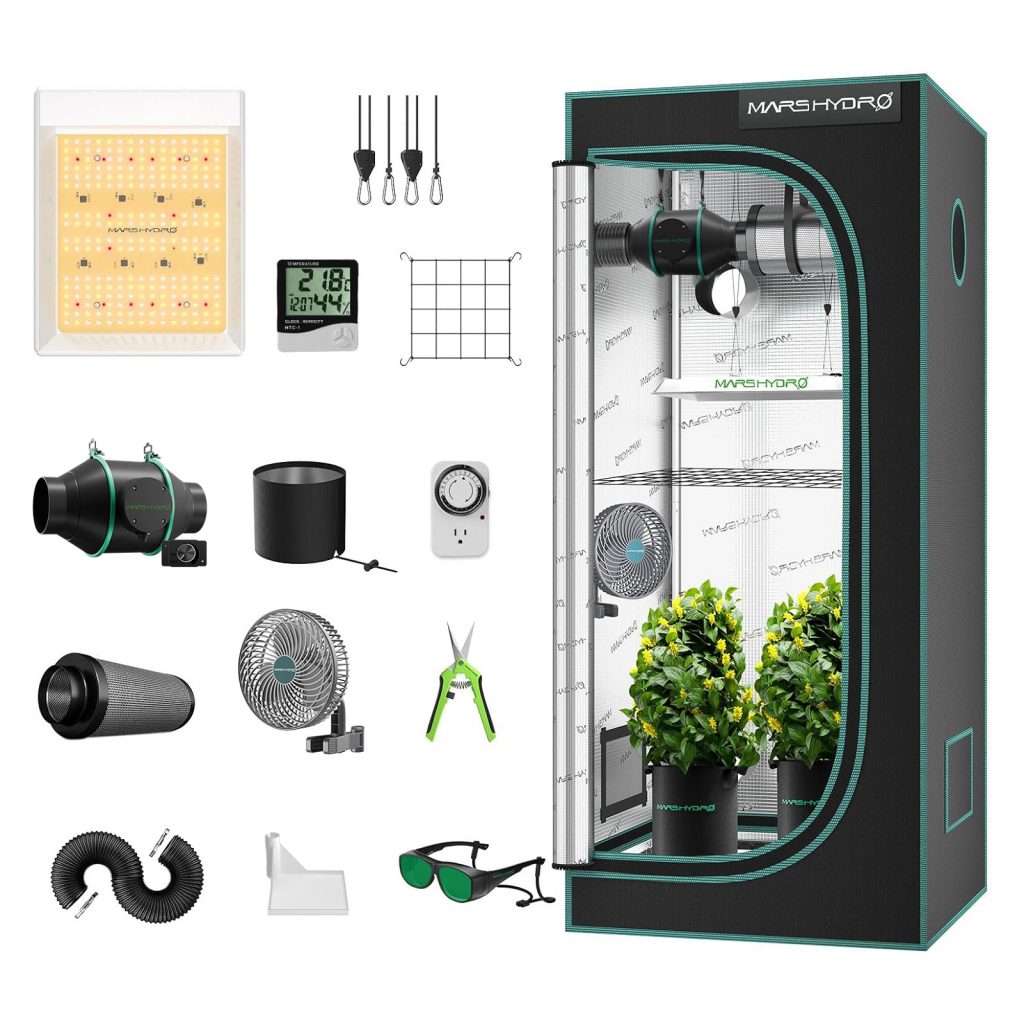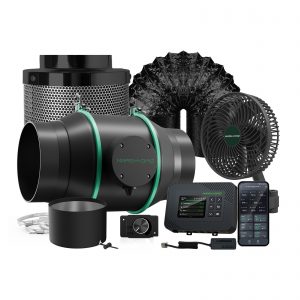Crisp, refreshing, and packed with flavor, cucumbers are a versatile vegetable enjoyed by many, and more and more people like to eat vining cucumbers. While people traditionally grow outdoor cucumbers, the idea of cultivating cucumbers indoors is gaining popularity among gardening enthusiasts and urban dwellers with limited space.
Whether you have a small apartment or a desire to extend your gardening season, this guide will provide you with essential tips and techniques to successfully plant cucumbers indoors. By following these steps, you can enjoy a bountiful harvest of delicious cucumbers right from the comfort of your own home.
Table of contents
- What You Need to Prepare for Growing Cucumbers in Pots Indoors
- How to Grow Cucumbers Vertically in Containers from Seeds-A Step-by-Step Guide
- Step one: Prepare the Growing Space for Cucumbers
- Step Two: Planting Cucumber Seeds or Seedlings
- Step Three: Provide The Best Growing Conditions for Cucumbers
- Step Four: Training and Supporting for Growing Cucumbers Vertically
- Step Five: Pest and Disease Management
- Step Six: Harvesting and Maintenance Your Cucumbers
- Frequently Asked Questions
What You Need to Prepare for Growing Cucumbers in Pots Indoors
- Pots or Containers: You can choose large containers with a capacity of at least 5 gallons (19 liters) to provide enough space for the cucumber roots to grow. And make sure the pots have drainage holes to prevent waterlogging.
- Soil: Opt for a high-quality potting mix that is well-draining and nutrient-rich. You can also create your own fertile soil by combining equal parts of compost, peat moss, and perlite or vermiculite for improved drainage.
- Cucumber Seeds or Seedlings: Purchase cucumber seeds of a variety suitable for indoor growing, or start with young cucumber seedlings from a reputable nursery. Please look for disease-resistant varieties that are known to thrive in container gardening.
Here we suggest some of the best and most popular cucumber seeds to grow:
- English Telegraph Cucumber

4. Trellis or Stakes: Cucumbers are climbing vines and require support to grow vertically. Set up a trellis or stakes in the pot to provide support for the cucumber plants and to keep them from sprawling on the ground.
5. Grow Lights: Adequate lighting is crucial for indoor or greenhouse cucumbers growth, especially if you don’t have access to sufficient natural sunlight. Invest in full-spectrum LED grow lights that mimic the spectrum of sunlight and provide at least 12-16 hours of light per day.
6. Thermometer and Hygrometer: Keep track of temperature and humidity levels in the growing area using a thermometer and hygrometer. Cucumbers prefer temperatures between 70-85°F (21-29°C) and humidity levels around 60-70%.
7.Watering Can or Sprayer: Maintain proper hydration by having a watering can or sprayer to provide regular moisture to the cucumber plants and keep the soil consistently moist. Avoid overwatering, as it can lead to root rot.
8.Fertilizer: Please choose a balanced, water-soluble fertilizer specifically formulated for vegetable garden plants. And follow the package instructions for application rates and frequency to provide the necessary nutrients for healthy cucumber growth.
9.Pruning Shears: Pruning cucumber plants is essential to maintain their shape, encourage good air circulation, and remove any diseased or damaged parts. Pruning shears will come in handy for this task.
10.Supportive Accessories: Additional items such as plant ties or clips may be needed to secure cucumber vines to the trellis or stakes as they grow.
How to Grow Cucumbers Vertically in Containers from Seeds-A Step-by-Step Guide
Step one: Prepare the Growing Space for Cucumbers

To start growing cucumbers indoors, the first step is to choose an appropriate location for their cultivation. Please look for a spot that receives ample sunlight or has access to artificial lighting.
Next, it’s essential to prepare the containers or pots in which you will grow the cucumbers. You need to select containers that have drainage holes at the bottom to prevent water from accumulating and causing root rot.
Before using the containers, it’s important to clean and sanitize them to minimize the risk of any potential pathogens or diseases. Thoroughly wash the containers with mild soap and water, and rinse them well. Additionally, you can use a diluted bleach solution to sanitize the containers to ensure they are completely dry before proceeding.
Once the containers are clean and dry, it’s time to fill them with the appropriate growing medium. It’s better to use high-quality potting soil or compost specifically formulated for container gardening. Fill the containers to within an inch or two of the rim, leaving enough space for watering and root growth.
Step Two: Planting Cucumber Seeds or Seedlings

Here are the steps to successfully growing cucumber seeds in your prepared containers:
First, make sure to harden off the cucumber seedlings before transplanting them. Hardening off is the process of gradually exposing the seedlings to outdoor conditions, such as wind and sunlight. This helps them acclimate to the new environment and reduces transplant shock.
Once the seedlings are hardened off, it’s time to transplant them into the prepared containers. Gently remove the seedlings from their nursery containers, taking care not to damage their delicate roots. If the roots are tightly bound, you can loosen them slightly to encourage proper growth.
Then dig a small hole in the center of the container, deep enough to accommodate the root ball of the seedling. And place the cucumber seedling in the hole and gently backfill with soil, ensuring that the root ball is covered and the seedling stands upright.
Step Three: Provide The Best Growing Conditions for Cucumbers

To ensure the successful growth of cucumbers indoors, it is crucial to provide them with the right growing conditions. Here are some key factors to consider:
Temperature and humidity play significant roles in cucumber cultivation. Cucumbers thrive in temperatures between 70°F and 85°F (21°C to 29°C) during the day and around 60°F (15°C) during the night. Additionally, cucumbers prefer a moderately humid environment, around 50% to 70% humidity. You can increase humidity levels by misting the leaves or placing a tray of water near the plants.
Enough light is vital for cucumber plants, as they require at least 6-8 hours of light daily. If your indoor growing space lacks sufficient natural light, you can supplement it with LED grow lights. Please choose full-spectrum LED grow lights that mimic natural sunlight and position them 6-12 inches above the plants. Adjust the height as the cucumber plants grow to ensure they receive adequate light.
Proper air circulation and ventilation are crucial to prevent stagnant air and reduce the risk of fungal diseases. Place inline fans in the growing area to promote air movement, which helps strengthen the cucumber plants’ stems and discourages pests and diseases.
Watering and moisture management are important considerations for indoor cucumber cultivation. You can check the moisture level regularly by inserting your finger into the soil up to the first knuckle. If it feels dry, water the plants thoroughly to ensure the water reaches the root zone. But avoid overwatering, as it can lead to root rot.
Fertilization and soil nutrients are necessary for the healthy growth of cucumber plants. Use organic fertilizers or garden compost tea to provide the necessary nutrients. Follow the instructions on the fertilizer package for application rates and frequency. Additionally, consider incorporating compost or well-rotted organic matter into the soil to enrich its fertility and improve moisture retention.
Step Four: Training and Supporting for Growing Cucumbers Vertically

Install trellis or stakes: Cucumbers are vining plants that benefit from vertical support. So install a trellis system or stakes in the containers to provide a structure for the cucumber vines to climb. Remember to choose a trellis or stakes that are sturdy enough to support the weight of the plants and fruits as they grow.
Guide the cucumber vines: As the cucumber plants grow, gently guide the main vine along the trellis or wrap it around the stakes. Encourage the vines to climb upwards, weaving them through the support structure. This helps prevent the vines from sprawling on the ground and keeps them organized, improving air circulation and reducing the risk of diseases.
Prune and remove excess foliage: Regularly check the cucumber plants for excessive foliage or side shoots. Prune away any leaves or shoots that are shading other parts of the plant, blocking sunlight, or causing overcrowding.
Adjust supports as needed: As the cucumber plants continue to grow, monitor their progress and adjust the supports accordingly. Check if the vines are securely attached to the trellis or stakes and make any necessary adjustments to prevent them from falling or sagging.
Step Five: Pest and Disease Management

Identify common pests: Familiarize yourself with the pests that commonly affect cucumber plants, such as aphids, spider mites, and cucumber beetles. Regularly inspect your plants for any signs of infestation, including visible pests, discolored or distorted leaves, or sticky residue on the foliage.
Implement preventive measures: Prevention is key to managing pests and diseases. Start by practicing good hygiene and maintaining a clean growing environment. Regularly remove any dead or decaying plant material promptly to eliminate potential breeding grounds for pests and diseases. Additionally, avoid overwatering and ensure proper air circulation to discourage fungal growth.
Implement organic pest control methods: If pests are present, consider using organic pest control methods. For example, you can introduce beneficial insects like ladybugs or lacewings to help control aphids and other pests. Besides, neem oil, insecticidal soaps, or horticultural oils can also be used to deter and control common pests.
Monitor and address diseases: Cucumber plants can be susceptible to various diseases, including powdery mildew, downy mildew, and bacterial wilt. Regularly inspect your plants for any signs of disease, such as discoloration, spots, or wilting. If detected, promptly remove and destroy affected plant parts to prevent the spread of disease. And provide proper air circulation, avoid overhead watering, and maintain optimal humidity levels to reduce the risk of fungal infections.
Step Six: Harvesting and Maintenance Your Cucumbers

After a long growth cycle, you can finally harvest and enjoy your carefully-cultivated cucumbers. But there are some important points you to need to specially pay attention to:
Monitor the maturity of cucumbers: Cucumbers are typically ready for harvest when they reach their mature size, have a vibrant color, and a firm texture. Please check the specific cucumber varieties you are growing for the recommended size and color. And avoid letting them become overripe, as this can lead to a bitter taste and affect the quality of the fruit.
Harvest cucumbers carefully: When harvesting cucumbers, use a sharp knife, a pair of garden scissors or pruners to cut the stem about 1/4 inch above the cucumber. Avoid twisting or pulling the fruit, as this can damage the plant and be gentle to avoid bruising or breaking the cucumbers.
Frequently Asked Questions
1. How Long Does It Take for Cucumbers to Grow?
The time it takes for cucumbers to grow can vary depending on the variety you are growing and the growing conditions. On average, cucumbers take about 50 to 70 days from the time of planting to reach maturity and be ready for harvest. However, it’s important to note that this is just an estimate, and the actual time may vary.
2. How Tall Does A Cucumber Plant Grow?
The height of a cucumber plant can vary depending on the specific variety you are growing and the growing conditions. On average, cucumber plants can reach a height of 1.5 to 8 feet (0.5 to 2.4 meters).
3. What Are the Advantages of Growing Cucumbers Indoors?
Extended growing season: By growing cucumbers indoors, you can extend the growing season and enjoy fresh cucumbers throughout the year, regardless of the outdoor climate.
Protection from weather and pests: Indoor cultivation provides a controlled environment that shields cucumber plants from extreme weather conditions, such as frost, heatwaves, or heavy rains. And can also reduce the risk of pest infestations.
Efficient use of space: Indoor gardening allows you to grow cucumbers in limited space, making it suitable for urban dwellers or those with small gardens.
Convenience and accessibility: Having cucumber plants indoors allows for easy access to fresh cucumbers. You don’t have to venture outdoors to harvest or tend to your plants, making it convenient and accessible, especially for individuals with mobility challenges or limited outdoor space.
Enjoyment and aesthetics: Growing cucumbers indoors can add beauty and greenery to your living space. It can be a rewarding and fulfilling experience to nurture and witness the growth of your own indoor garden.
4. Can I Grow Cucumbers Indoors Year-Round?
While it is possible to grow cucumbers indoors year-round, it can be more challenging due to the specific requirements of cucumber plants and the need to replicate their natural growing conditions.
5. Do Indoor Cucumber Plants Require Pollination?
Indoor cucumber plants, like their outdoor counterparts, require pollination to produce fruits. Cucumbers are not self-pollinating plants, meaning they need the transfer of pollen from the male flowers to the female flowers for successful fertilization and fruit development. You can learn the specific definitions of male and female flowers of cucumbers.
To manually pollinate indoor cucumber plants, you can use a small brush or cotton swab to collect pollen from the male flowers and transfer it to the stigma of the female flowers. Gently brush the inside of the male flower to collect the yellow pollen grains, then carefully transfer the pollen to the center of the female flower, ensuring it contacts the stigma.



















